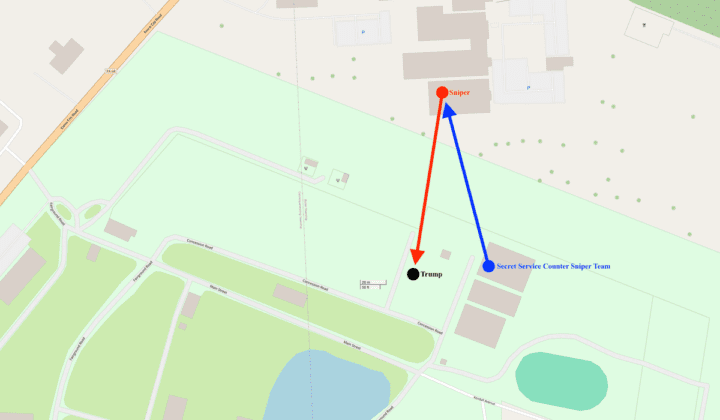Securing the border depends on reforming a broken asylum system
Details of the potential bipartisan border deal have trickled out this week and one thing is clear: it’s not 2020 anymore.
President Biden campaigned on a pledge “to restore our moral standing in the world and our historic role as a safe haven for refugees and asylum-seekers.” Now, in a speech promoting the legislation, Biden said that “what’s been negotiated would – if passed into law – be the toughest and fairest set of reforms to secure the border we’ve ever had in our country.”
Under the new regulations, the president said he would have “a new emergency authority to shut down the border when it becomes overwhelmed. And if given that authority, I would use it the day I sign the bill into law.”
Biden has supported policies to reduce illegal border crossings throughout his career, but his rhetoric has never been so unflinchingly hawkish. The deteriorating situation at the border is to blame.
In 2023 there were more migrant encounters with border patrol than ever before, following a record-breaking 2022. In just the last two months of 2023 there were more encounters than there were in any single year from 2010 to 2018. The sheer volume of arrivals is overwhelming the Border Patrol, the court system, and the municipalities receiving the migrants.
Explaining the rapid rise is more difficult. As Democrats remind us, the reasons that drive migrants to the border are complex, such as economic distress, environmental crises, war, and gang violence. Republicans, meanwhile, point out the porousness of the US border which hundreds of thousands secretly cross each year despite an ever-increasing budget to police it. The US has never spent more to control migration, and yet the border has never been busier.
All of this is true to a degree, but it misses the single largest driver of why migrants keep arriving at the US border: an overwhelmed asylum system.
The Rise of Asylum
Claiming asylum status is a right enshrined in US law. Under current regulations, asylum seekers have to demonstrate that they have a “credible fear” of persecution or torture to avoid immediate expulsion. If they meet that bar, they then wait for a court hearing which will determine the outcome of their asylum case. As they wait for their day in court, they are permitted to stay in the US and, beginning six months after filing their asylum claim, they are granted work permits.
Or at least that is how it is supposed to work. Beginning about a decade ago, asylum claims started to rise. As more people arrived, the immigration court system could not close cases nearly as quickly as new cases came in. A case backlog of about 100,000 in 2000 grew to 250,000 in 2010 and then quadrupled to over 1 million in 2020. Then things really started to pick up. By 2022, it topped 2 million. In 2023, it grew to over 3 million.
In 2022, when the case backlog was 2 million, the average wait time for a hearing was more than four years. Now with the backlog over 3 million cases and growing at a rate five times higher than just a few years ago, we can expect the wait to be even longer.
This backlog is a headache for immigration authorities, but a boon for migrants. The longer the backlog, the longer it will take for them to get an immigration hearing. As the migrants wait for a hearing, they can work in the United States. As the years go on, it becomes increasingly likely that US authorities will ultimately allow the migrants to stay in the US even if their asylum claims are found to be baseless.
Three statistics go a long way in explain why applying for asylum in the US has become so appealing:
- Half of all migrants who request asylum at the southern border are almost immediately released into the US, where they will be granted a work permit.
- The average asylum seeker can expect to spend more than 4 years in the US before going in front of a judge.
- Most asylum claims are ultimately rejected, but even rejected applicants are highly unlikely to be deported.
Under these conditions, there is a massive incentive for migrants to arrive at the border and claim asylum. For most people seeking to move to the US, it is their best strategy by far. 20 times as many migrants came into the US in 2023 through claiming asylum than the official Refugee Admissions Program.
People all around the world have recognized this to be a very good deal. While arrivals at the southern border used to be dominated by migrants from Latin America, things are starting to change. Tens of thousands of migrants from Turkey made the journey in fiscal year 2023. Almost 100,000 Indians arrived unannounced at various US ports. Arrivals from African countries jumped from slightly over 10,000 in 2022 to almost 60,000 in 2023. More than 30,000 Chinese migrants arrived at the southern border, many taking advantage of China’s visa-free travel relationship with Ecuador and then continuing their journey from there.
Increasing wages in developing countries are encouraging the trend. According to the National Intelligence Council’s Global Trends report, “at least 34 developing countries—including Bangladesh, India, Nigeria, and the Philippines—are likely to see emigration rates increase during the next decade, because rising incomes will provide more people with the means to seek better lives abroad.”
With more people capable of making the journey to the US southern border and with return on investment increasing as the immigration court backlog grows, there is little reason to expect this trend to subside.
Border Politics
Under these circumstances, it is essential to US immigration policy that something is done to address the dysfunctional asylum system. The president is inclined to agree.
Biden’s immigration policy is polling worse than any other issue, with 70 percent of Americans disapproving. His approval rating on immigration is the lowest recorded of any president in the 20 years that the ABC News/Washington Post has been asking the question. With an election less than 10 months away, Biden knows he needs a breakthrough if he hopes to beat Trump.
For the last few months, Democrats and Republicans have been negotiating a border deal. Asylum policy changes are central to it, with the legislation aiming to tighten admission standards, reduce adjudication times, and even trigger a border shutdown if the border becomes overwhelmed. When an average of 5,000 people illegally cross the border each day for five consecutive days, authorities would gain additional authority to expel new arrivals.
But Trump doesn’t want Biden to get this win in an election year. Trump is calling on Republicans to kill the deal, even if it achieves years-long Republican aspirations. Mitch McConnell described the situation as a “quandary.” Apparently letting the crisis fester and deliberately angering everyone might be the Republican party’s 2024 strategy. Meanwhile left-wing activist groups are rallying against the proposed restrictions, and progressive Democrats are threatening to break from the president and vote it down.
They are misguided. While the text of the bill is yet to be made public, it is plain enough that the situation at the border demands action. Millions of people with specious asylum claims are joining an overwhelmed system because the system is overwhelmed, and nothing but a change in policy can disrupt this feedback loop. It is the nature of bipartisan legislation that no one gets exactly what they want. With the asylum system breaking down more each day, Congress should prioritize a deal.





